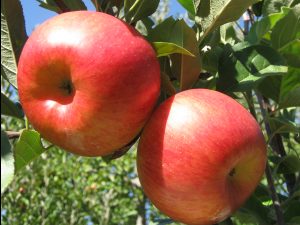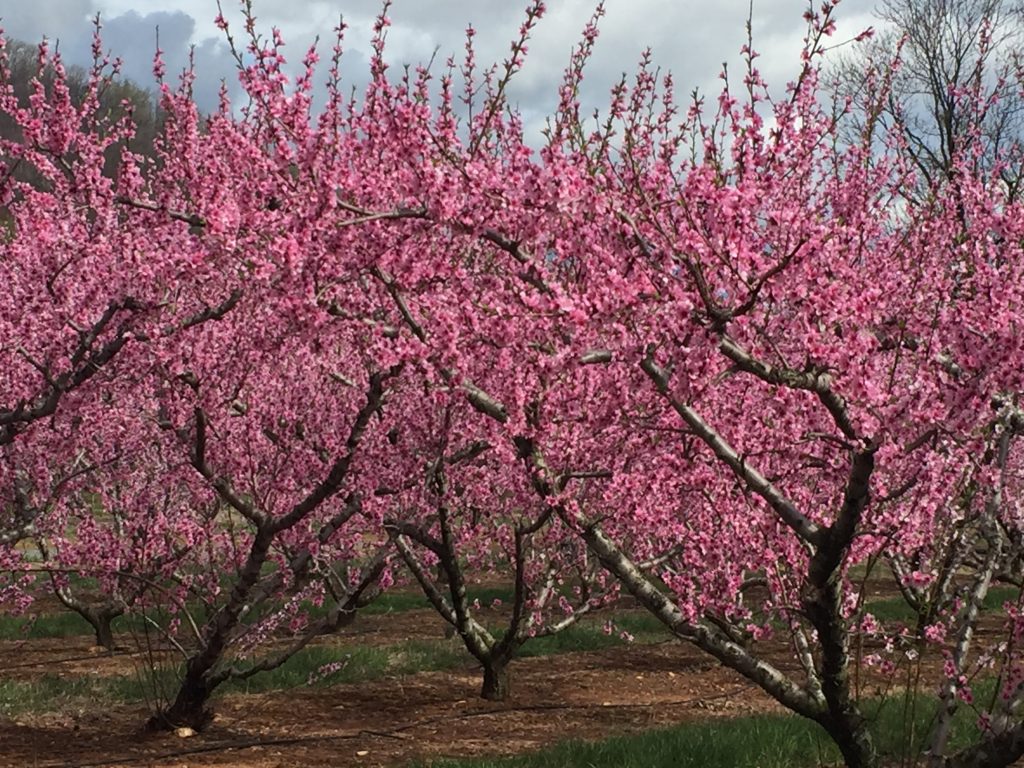Backyard Orchards

A backyard orchard with fruit picked at the peak of ripeness yield taste, nutrition and satisfaction like none other.
Why plant fruit trees in backyard orchards? Store-bought fruit offers advantages: convenience, variety and year-round availability. However, sometimes commercially grown products conjure nagging questions. Where was it grown? When was it picked? Will it ever ripen? Were chemicals used, and if so, how much? And what about nutrition and flavor?
Many of these questions can’t be easily answered. If they are, they’re likely to include sobering realities. Visits to a local farmers’ market are an alternative. Another option involves a lot more patience and work: plant fruit trees in your own yard.
There’s been a global resurgence in backyard and even front-yard orchards, according to Tom Burford, a seventh-generation apple producer who lives in Lynchburg.
“In the last two decades, growing your own fruit trees has accelerated to the point that it has taken on a life of its own,” the global consultant said. “There were generational interruptions after World War II, but now there’s a clamor for edible landscaping” that includes temperate and tropical fruit.
While the number of backyard orchards is growing, their overall size is not. An era ago, the family orchard may have extended over an acre with each standard-size tree commanding a hefty plot. Today, the “backyard orchard culture” maximizes smaller spaces through a high-density system of planting. Homeowners plant not one, but maybe two or three single fruit trees in very close proximity. Others use tight hedgerows 36 to 18 inches apart, or espalier trees against a fence or wall. Though these space-saving techniques are atypical for commercial growers, they make it possible for homeowners to grow their own fruit in suburban neighborhoods and urban settings.
The tight space restrictions typically advocate using dwarf and semi-dwarf rootstock. If space is available, Burford recommended the latter since dwarf varieties are more susceptible to a bacterial disease known as fire blight.
“Dwarf varieties also require irrigation and permanent staking or trellises because their root systems are very weak,” he added.
Eastern-facing orientation proves ideal, whenever possible, since full morning sun dries the foliage before fungus can be produced. A local nurseryman also may help ensure beginner’s success by suggesting varieties not highly susceptible to diseases, like fire blight, rust or scab.

Peach trees transform the landscape with gorgeous pink blossoms before bearing fruit. Photo by Cynthia Chiles
By planting different cultivars, flavors are assorted and harvests can be extended. Waste is potentially reduced, as well, since all the fruit doesn’t ripen at one time. Attracting different pollinators helps maximize yields and improve overall health of the landscape. Just be sure to verify each variety’s pollination requirements, since some are self-pollinating and others rely on another specific variety for pollinating success. Related to apples, most members of the Winesap family, such as Arkansas Black and Black Twig, are pollen sterile and need a pollinator like Golden Delicious or a fruiting crabapple.
So what are the drawbacks with the backyard orchard culture? Burford warned novices not to expect full buckets of fruit the first couple years. Dwarf varieties may take two to three years to produce their first crop, and semi-dwarfs five to six years. The actual lead time varies according to the variety’s genetic code and the rootstock’s vigor. With apple trees, Burford recommended removing all but a few apples the first few years in order to develop the tree’s structure for hanging of future crops.
Maintenance also increases with space-restricted planting. Pruning is especially important the first three years, when the tree’s shape and size are essentially established. The backyard orchard culture involves keeping trees at a height convenient for spraying, netting and harvesting. A lifetime of pruning, during summer and again in the dormant season, can seem daunting. This is especially true for the less experienced. However, local experts, online videos and hands-on practice can ease learning curves. And as Burford noted, pruning mistakes do grow back.
Over the course of the tree’s life, growers should avoid over-application of nitrogen fertilizer and water. Both can stimulate growth and create the need for even more pruning.
“Whatever you embrace to grow will be a challenge, but it will be a learning experience,” Burford said. Besides peak-of-ripeness flavor and nutrition, backyard orchards offer the beauty and fragrance of spring blossoms. As with any type of gardening, self-satisfaction also accompanies I-grew-it-myself harvests.
“Just don’t expect perfection,” Burford cautioned. “After all, if every fruit is perfect, what are you going to use for making sauces and cider?”
References and for more information on backyard orchard culture: Chicago Botanical Garden and Dave Wilson Nursery. Or order your copy of Burford’s newest book, Apples of North America: 192 Exceptional Varieties for Gardeners, Growers, and Cooks.
What to grow
The best time for planting fruit trees is September to October. Ruth Tierney of Southern States Cooperative in Midlothian recommended the following semi-dwarf varieties for Richmond’s Zone 7:
• Enterprise apple
• Montmorency sour cherry
• Santa Rosa plum
• Red Haven peach
• Kieffer European pear
• Raja Asian pear
• Fuyu Imoto persimmon
This article first published in the Richmond Times-Dispatch in July 2016.